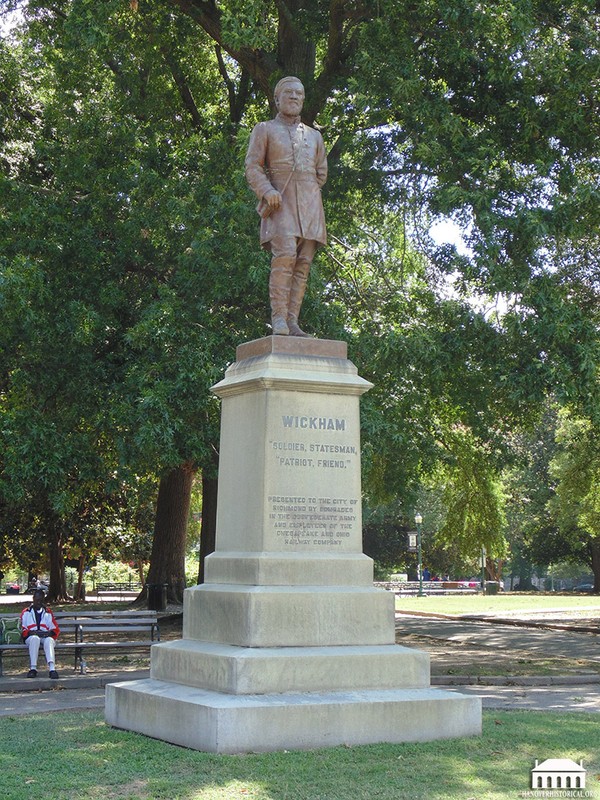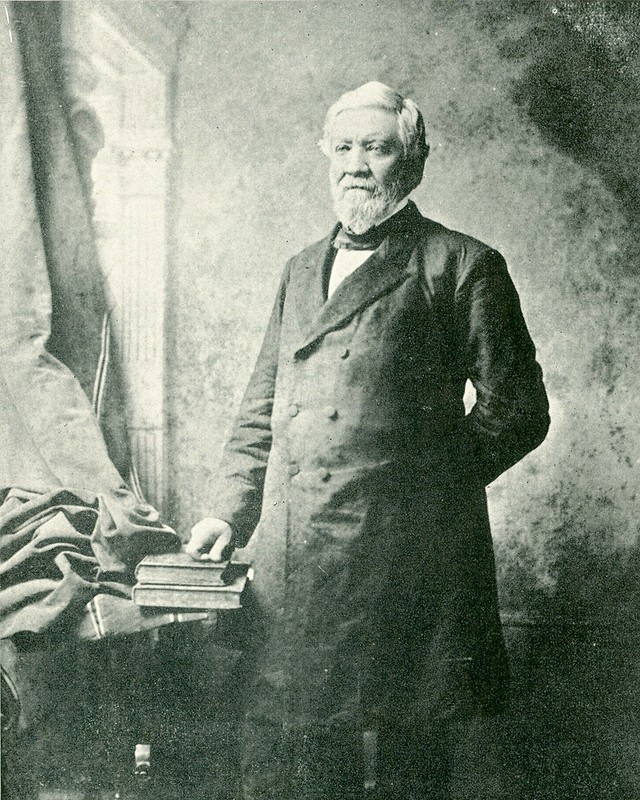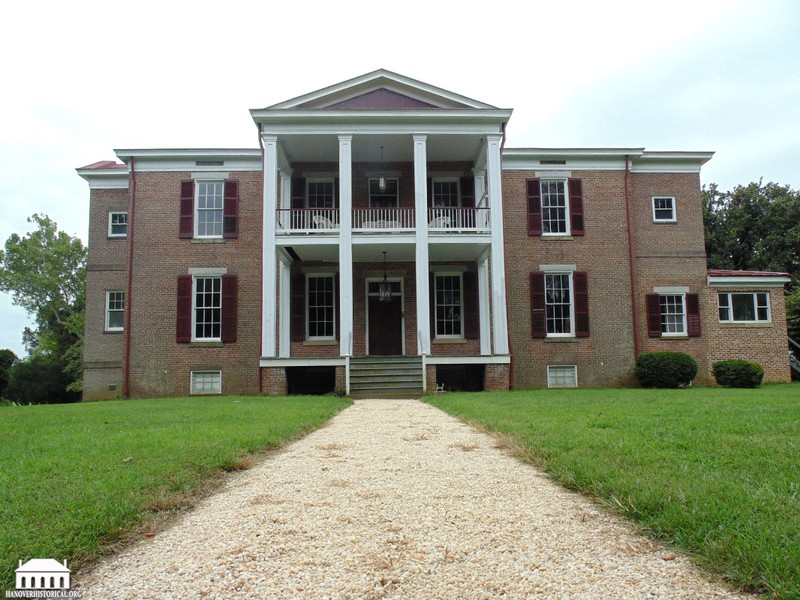Williams Carter Wickham Monument
Introduction
Text-to-speech Audio
Images
The Williams Carter Wickham Monument in Monroe Park, Richmond

Williams Carter Wickham

Hickory Hill Plantation; the post-war brick structure replaced the earlier wooden version which burned down

The toppled statue of Williams Wickham, June 2020

The remaining Wickham Monument pedestal

Backstory and Context
Text-to-speech Audio
Born in 1820, Williams Carter Wickham hailed from a prominent Virginia family. His father William Fanning Wickham owned and operated Hickory Hill, a 4,000 acre plantation in Hanover County that grew wheat using enslaved labor. His mother Anne Butler Carter Wickham was related to the Lee family (Anne’s sister was Robert E. Lee’s mother) who often visited. Williams Carter Wickham earned a law degree from the University of Virginia and practiced law while also helping manage Hickory Hill. He entered Virginia politics in 1849 as a Whig, serving in both the House of Delegates and the State Senate. He also served as a captain in the local Hanover Dragoons militia company.
During the secession crisis in 1860-’61, Williams Carter Wickham opposed secession. Yet like many Virginians and those from the Upper South, Wickham refused to fight against his home state and the South. Wickham enlisted the Confederate Army alongside the Hanover Dragoons, who became Company G of the 4th Virginia Cavalry. Commissioned a lieutenant colonel, Wickham was wounded at the Battle of Williamsburg in the spring of 1862. Returning to Hickory Hill to recover, he was briefly captured by Union forces and exchanged. He returned to service, participating in many more campaigns including Antietam and Gettysburg and rising to the rank of brigadier general. In 1863, Wickham was elected to Confederate Congress and resigned his commission in 1864 to take his seat.
In the wake of the Civil War, Wickham served as an officer and president of the Chesapeake and Ohio Railroad. He also inherited Hickory Hill following his father’s death in 1870. Wickham continued his political career. Interestingly, he embraced the Republican Party post-war (anathema to many Southerners as the party of Lincoln) and won election as a state senator in 1883. Wickham passed away on July 24, 1888. His son Henry T. Wickham also pursed a career in Virginia politics, and his grandson Captain Williams Carter Wickham served in the United States Navy.
Following his death, the Virginia General Assembly, friends, and former soldiers raised funds to erect a monument to Williams Carter Wickham in Richmond’s Monroe Park. The park was the site of an instruction camp and military hospital during the war. Sculpted by local artist Edward Valentine, it featured a 7 foot tall bronze Wickham standing atop a 9 ½ foot granite pedestal. On the granite pedestal were the words: “Wickham, Soldier, Statesman, Patriot, Friend! Presented to the City of Richmond by Comrades in the Confederate Army and Employees of the Chesapeake and Ohio Railway.”[6]
The monument was dedicated on October 29, 1891 to fanfare. Local militia companies and many former members of Wickham’s cavalry commands paraded through the city, as did C&O Railroad and local city officials. Virginia Governor Philip W. McKinney and North Carolina Governor Thomas M. Holt were present for the ceremonies as well. Fitzhugh Lee, a former Confederate general and Virginia governor, delivered the keynote address. Hitting upon common Lost Cause themes, Lee framed Wickham’s Confederate service as in support of the constitutional “right to withdraw from the Union,” ignoring slavery’s role in prompting the conflict.[6] Lee praised the erection of monuments to former Confederate leaders like Wickham taking place across Richmond.
In recent years, Confederate monuments in Richmond and across the country have come under renewed scrutiny. Events like the violent 2017 Unite the Right rally, the death of George Floyd, and debates over systemic racism have led many to call for the reinterpretation or removal of Confederate monuments, seen as tributes to white supremacy and Lost Cause ideology. Following the Unite the Right rally, Clayton and Will Wickham (descendants of Williams Carter Wickham) penned an open letter calling for the removal of the statue to a man who “unapologetically accrued power and wealth through the exploitation of enslaved people.”[7] On the evening of June 6-June 7, 2020, protestors in Monroe Park toppled the graffiti-covered bronze statue to of Wickham. It was removed into storage, and throughout the summer other Confederate monuments were either toppled by protestors or removed by the City of Richmond (including those on Monument Avenue).
Sources
1. Mark Robinson. "Confederate descendants ask Richmond Mayor to remove statue from Confederate Park." August 30, 2017. Richmond Times-Dispatch. Web. Accessed November 11, 2020. https://richmond.com/news/local/confederate-descendants-ask-richmond-mayor-to-remove-statue-from-monroe-park/article_3b313c75-c6f9-5273-8842-00944669f305.html
2. "Hickory Hill." National Register of Historic Places Nomination Form. National Park Service, U.S. Department of the Interior. 1974. Digitized. Accessed November 11, 2020. https://catalog.archives.gov/id/41681175
3. "Hickory Hill." Hanover County Historical Society. Web. Accessed November 11, 2020. https://www.hanoverhistorical.org/hickoryhill.html
4. "A Guide to the Williams Carter Wickham Letterbook." Special Collections, Virginia Tech. MS2008-011. Web. Accessed November 11, 2020. https://ead.lib.virginia.edu/vivaxtf/view?docId=vt/viblbv00240.xml
5. "Wickham, Williams Carter." Encyclopedia of Virginia Biography. Vol. 3. Edited by Lyon Gardiner Tyler. New York: Lewis Historical Publishing Company, 1915.
6. "Virginia Affairs. The Wickham Statue Unveiled in the Presence of a Great Crowd." October 31, 1891. Baltimore Sun. Digitized via Newspapers.com. Accessed November 11, 2020. https://www.newspapers.com/clip/52820624/the-baltimore-sun/
7. George Copeland, Jr. "Columbus and Wickham statues come down." June 11, 2020. Richmond Free Press. Web. Accessed November 11, 2020. http://richmondfreepress.com/news/2020/jun/11/columbus-and-wickham-statues-come-down/
8. Zoe Hall. "The First to Go: Who Was Williams Carter Wickham Anyway?" June 22, 2020. RVA Magazine. Web. Accessed November 11, 2020. https://rvamag.com/politics/local-politics/the-first-to-go-who-was-williams-carter-wickham-anyway.html
Hanover County Historical Society: https://www.hanoverhistorical.org/hickoryhill.html
Wikipedia: https://en.wikipedia.org/wiki/Williams_Carter_Wickham
Hanover County Historical Society: https://www.hanoverhistorical.org/hickoryhill.html
RVA Magazine: https://rvamag.com/politics/local-politics/the-first-to-go-who-was-williams-carter-wickham-anyway.html
Regina H. Boone, Richmond Free Press: http://richmondfreepress.com/news/2020/jun/11/columbus-and-wickham-statues-come-down/
